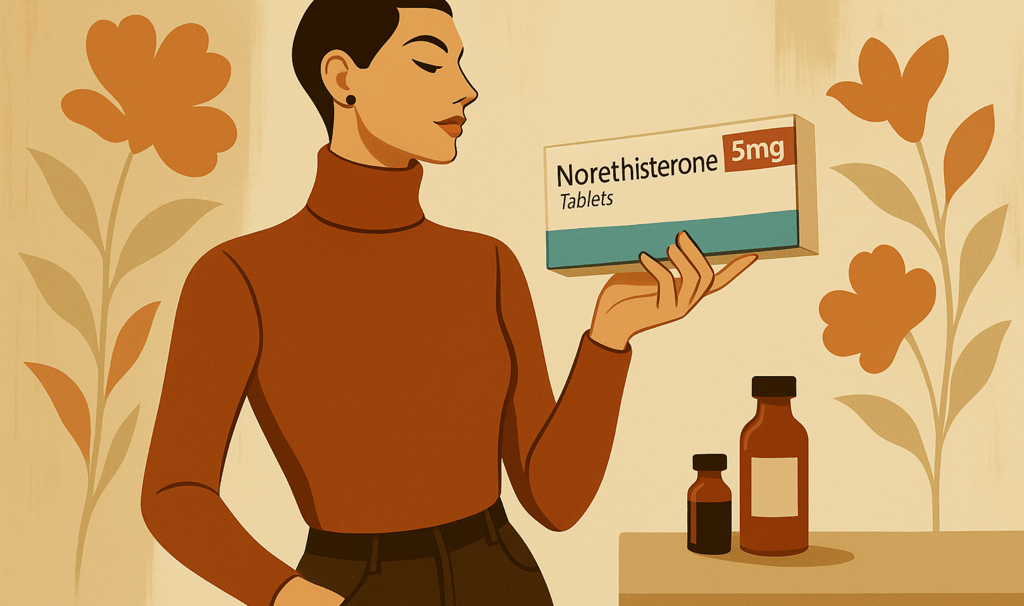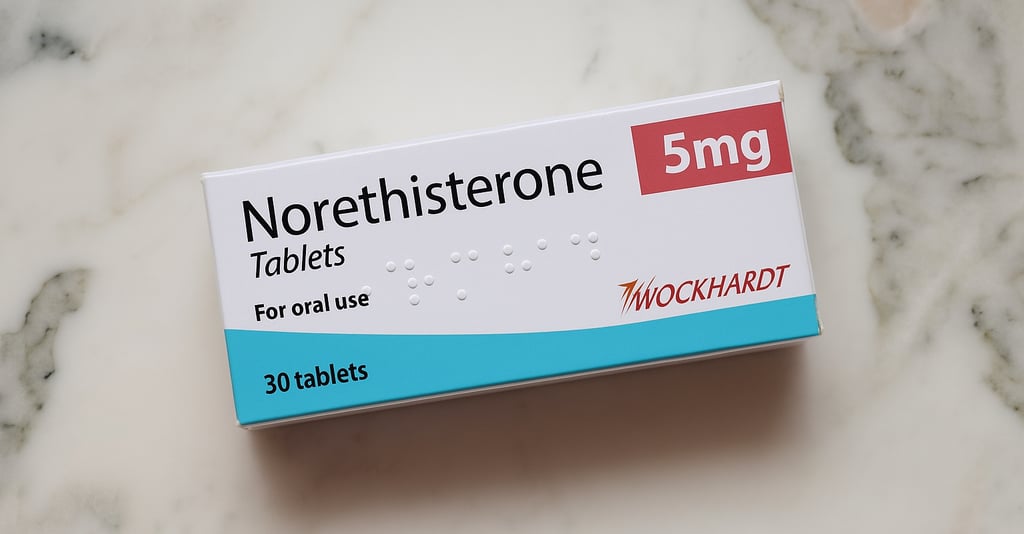What Is Norethisterone? IVF Downregulation Explained
Taking Norethisterone for IVF? Learn what it is, how downregulation works, and what to expect — physically and emotionally — during this early IVF phase. Read on IVF in London for more.
TREATMENT & MEDICATION


If you're about to begin IVF, you may be handed a packet labelled Norethisterone and told to take it before your actual stimulation starts. You might be thinking, “Wait — this is a birth control pill? Why am I taking this if I want to get pregnant?”
That’s where downregulation comes in.
In this post, we’ll walk through what Norethisterone is, why it’s used in IVF, and how it fits into your cycle — including what it actually feels like to take it, side effects, and tips for coping.
What Is Norethisterone?
Norethisterone (also called norethindrone) is a synthetic progestogen — a hormone that mimics the effects of progesterone. In IVF, it’s commonly used in the downregulation phase to temporarily switch off your natural cycle before stimulation begins.
This is often part of a “long protocol” IVF cycle or used for cycle scheduling, especially when your clinic needs to coordinate treatment dates.
What Is Downregulation in IVF?
Downregulation is essentially putting your ovaries “on pause” so the IVF team can take full control of your hormone levels during stimulation.
By taking Norethisterone, you’re helping to:
Suppress ovulation
Prevent your uterine lining from developing too early
Allow your clinic to safely start stimulation (stims) on a clean slate
When and How Do You Take It?
Every clinic’s protocol may vary slightly, but Norethisterone is typically taken:
Once or twice daily (depending on dose)
For 7 to 14 days, usually starting in the second half of your natural cycle (around day 16–21)
You will stop taking it a few days before your bleed, which marks the start of your stims
👉 Always follow your clinic’s specific instructions.
What It Feels Like: Real Side Effects & Emotions
Many people say that Norethisterone is one of the least pleasant parts of the IVF journey — not because it’s dangerous, but because of how it makes you feel.
Common side effects:
Mood swings or tearfulness
Irritability or rage (often described as “ragey PMS x10”)
Breast tenderness
Headaches
Fatigue
Bloating
Feeling generally “off” or emotionally flat
Some people say it made them feel “completely not myself” — others report very few side effects. It’s highly individual.
💡 Tip: Let your partner or close friends know in advance so they understand it’s hormone-related and temporary.
Why It Matters Emotionally
You’re already stepping into a vulnerable process — and then you’re put on a hormone that can feel like it hijacks your emotions.
If you feel angry, disconnected, or low while taking Norethisterone, you are not failing at IVF. You are reacting like a human being whose brain is being asked to adjust to synthetic hormone suppression.
👉 Related: IVF and Mood Swings: What’s Normal?
What Happens When You Stop Taking It?
Once you stop taking Norethisterone:
You’ll usually have a withdrawal bleed within 2–5 days
This bleed signals the start of your stimulation phase
Your clinic will tell you exactly when to begin your FSH injections (like Gonal-f, Ovaleap, Menopur, etc.)
This is the time I found hardest - the withdrawal from the Norethisterone made me irritable and weepy and I just didn't feel like myself. My body was achy and I just couldn't put my finger on what was wrong, but everything felt wrong! As soon as my bleeding arrive, everything was fine again!
Do All IVF Cycles Use Norethisterone?
No — not all IVF protocols include it. You’re more likely to be prescribed Norethisterone if:
You’re on a long protocol
You’re doing cycle scheduling for convenience or clinic timing
You need extra control over ovulation due to irregular cycles or PCOS


© 2025. All rights reserved.
